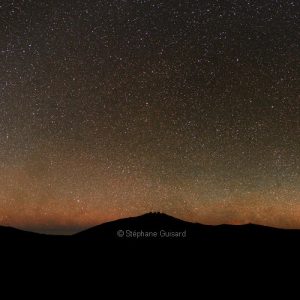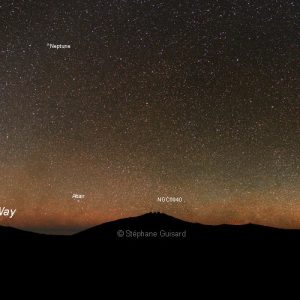Darkest Sky 360-degree Panorama
Description
Dark starry sky is an essential beauty of our natural environment but it is also astronomically important. Skyglow caused by light pollution, moonlight and lights from other celestial and atmospheric sources does not allow us to see the darkest possible sky. TWAN photographer Stephane Guisard achieved the darkest night in the Atacama Desert of Chile, near Cerro Paranal observatory (the mountain in the middle), where there is no light pollution all around the horizon. To achieve the darkest possible sky he chose a new moon night (no moon) around mid-night (no twilight and minimum brightness of zodiacal light)in a time when the Milky Way has touched all around the horizon with the minimum share in causing airglow. So the light around the horizon in this all-sky view is not from urban areas, its the disc of our home galaxy, the Milky Way (similar condition is possible to achieve in March and April in the northern hemisphere). There are many sights in this 360-degree panorama. Move the slider on the image to see all the labels. On the left the Large and Small Magellanic Clouds, satellite galaxies of our Milky Way, are visible. On the right is Orion and the red glow of Barnard’s Loop. The Andromeda Galaxy is also easy to see in the middle.




comments (2)
Simply incredible! Thanks a lot for posting such an awesome picture! I wish you had added a label indicating which arm of the Milky Way is shown (Sagittarius and Perseus), to see where each one ends/begins in the picture and the names of the constellations through which the Milky Way passes by…
January 9, 2011 at 12:32 am